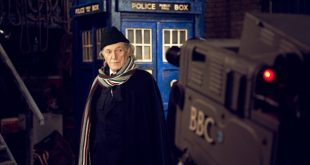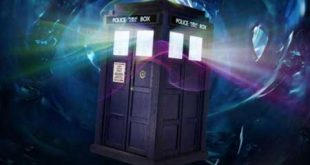Original broadcast date: 21 December 1963 – 1 February 1964
Story Arc #002: 7 episodes: The Dead Planet / The Survivors / The Escape / The Ambush / The Expedition / The Ordeal / The Rescue
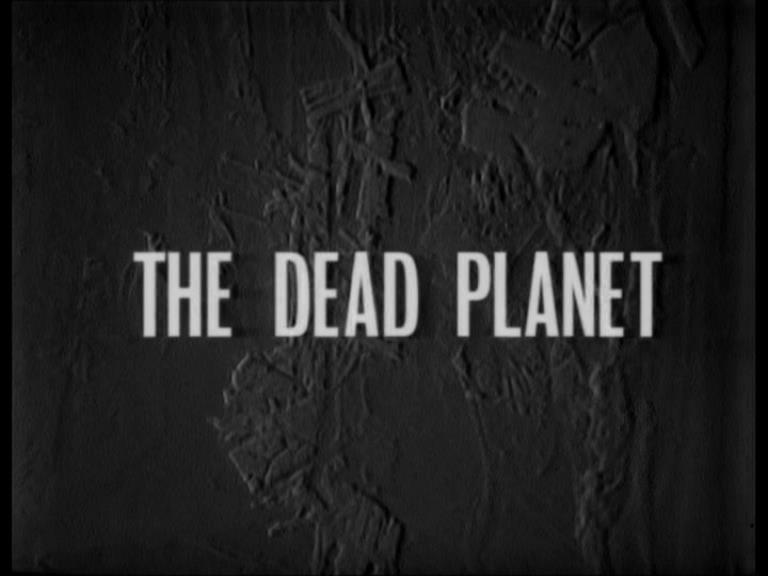
Synopsis: The TARDIS, having hurriedly departed Stone Age Earth at the end of the previous episode, is flung randomly through space and time before landing. Venturing outside into a petrified forest, Ian and Barbara quickly realise they have not returned to their own time or even their own planet; the world they have arrived at appears to be utterly devoid of life. The Doctor theorises that a great war must have been fought and that neutron bombs and the resulting fallout killed every living thing. Exploring a little further they come within sight of a huge city but this too seems deserted. The Doctor is keen to investigate but the others insist that it would be safer to leave well alone.
However, just before take-off the Doctor deliberately sabotages the TARDIS to prevent it leaving; he claims a component needs to be refilled with mercury and that they might find some at the dead city. Ian, Barbara and Susan reluctantly follow the Doctor back through the forest and into the city; to cover more ground they agree to split up and explore individually. Barbara works out how to open the doors and ventures inside one of the many buildings only to discover that the city is far from deserted…
I think it’s fair to say that this second story arc is where the show really begins, or at least begins to exhibit many of the characteristics that have served it so well over the past fifty years. In particular this is where the show’s vast lore began to build up and in recognition of that I think it would be useful to break down this column into various sections each dealing with a separate part of that lore. The categories will be as follows:
- Doctor lore – dealing with information we learn about the Doctor himself, his personality, background, skills and so on;
- TARDIS lore – details, usually of a technical nature, about the Doctor’s time machine;
- Creature lore – what the show tells us about the enemies (and allies) that the Doctor encounters on his adventures
In addition there will be a section dealing with how the story works as a piece of television, and details about any persons of interest involved in the acting or production credits.
Doctor lore
Like the first story arc, THE DALEKS reveals very little information about the Doctor; what little there is tends be comments made about him by other characters. For instance, Barbara comments (correctly) that he has “a knack of getting himself into danger”. Similarly, Ian remarks that he is unsure that the Doctor possesses the ability to return Barbara and himself to their own place and time, implying that he’s not altogether convinced that the Doctor is always in full control of where the TARDIS is heading.
However, there are two or three interesting exchanges in which the Doctor himself provides tantalising hints about his character and back story. The first occurs when Ian discovers a petrified animal in the forest; the Doctor explains that it was a metallic creature that harnessed magnetic energy to live. Ian finds this incredible but the Doctor says “Can’t you imagine an animal unless it’s flesh, blood and bone?” This is a wonderful remark that not only hints at the amazing creatures the Doctor must have encountered on his travels but also looks forward to the kind of show that DOCTOR WHO would become.
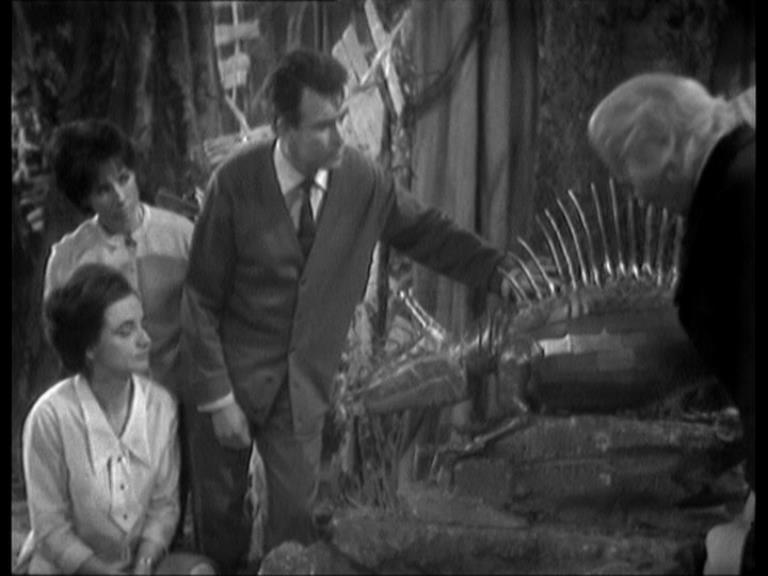
Secondly, at the end of the adventure the Thal (see creature lore) leader invites the Doctor to remain with them to assist in bringing life back to the planet. The Doctor declines, saying “I’m much too old to be a pioneer – although I was once, among my own people.” As brief as it is, by my reckoning this is the first time the Doctor has discussed his background. Sadly the conversation ends there and the snippet of information only heightens his air of mystery.
The final remark the Doctor makes about himself is when having turned down the Thals invitation to remain he is asked by them for advice on rebuilding the planet. Refusing, he says “I never give advice.” This seemingly non-negotiable position reflects the Doctor’s curiously neutral position throughout THE DALEKS. Although in subsequent incarnations the Doctor becomes a more overtly heroic figure, at this early stage he is still pretty much merely an observer. Indeed it is largely Ian who drives the aid which they give to the Thals in their struggles against the Daleks. It’s not that the Doctor doesn’t care; it’s more that he is seemingly operating under orders not to interfere. This may be something to do with his status as a Time Lord but, so far, such information is missing.
One other point worth noting is the first glimpse of one of the Doctor’s gadgets: a pair of spectacles that functions like binoculars. Okay, so not as iconic as the ‘sonic screwdriver’, but useful nevertheless; in this adventure it allows the Doctor to take a good look at the deserted city from a safe distance.
TARDIS lore
THE DALEKS proves to be a rich source of lore relating to the TARDIS and in fact a crucial component in its operation become the central McGuffin in the story.
Not having any idea where the TARDIS has brought them, Ian quizzes Susan on how the ship works. He asks her whether there is anything on board that records their journeys; she explains that there is a meter attached to a big bank of computers and that If you feed it the right information it can take you anywhere you want to go. Subsequently the Doctor says that because they left the Stone Age Earth so hurriedly he was unable to make the correct calculations and hence had no control over where they ended up.
In a light-hearted interlude, we learn how the Doctor and his companions are fed while on board the TARDIS: it has a console that can produce synthetic food which tastes of whatever you choose. The Doctor looks up the chosen food in a code book, enters the code and a rectangle of paste comes out which has the desired flavour, in this case bacon and eggs – much to Ian and Barbara’s delight. Quite how such prosaic food has ended up on an intergalactic menu isn’t explained, but then neither is the fact that everyone the Doctor encounters seems to speak perfect English.
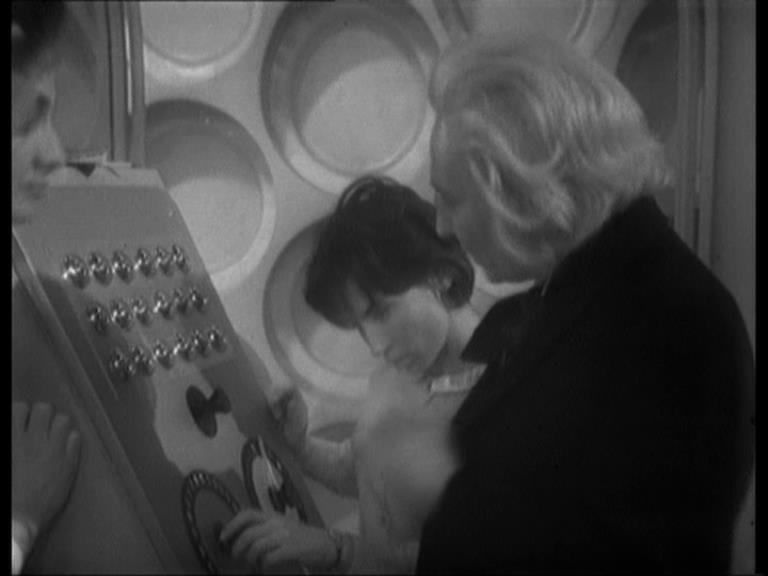
Other on-board gizmos include a remote scanner for viewing the area immediately outside the TARDIS and a diagnostic device which can indicate any areas of the TARDIS that are malfunctioning. It is this second device that Susan uses when, unbeknown to her, the Doctor deliberately sabotages the ship in order to remain on the planet. He removes a small component from the ship’s central operating console (later referred to as a “fluid link”) and the diagnostic tool correctly identifies the problem area as K7.
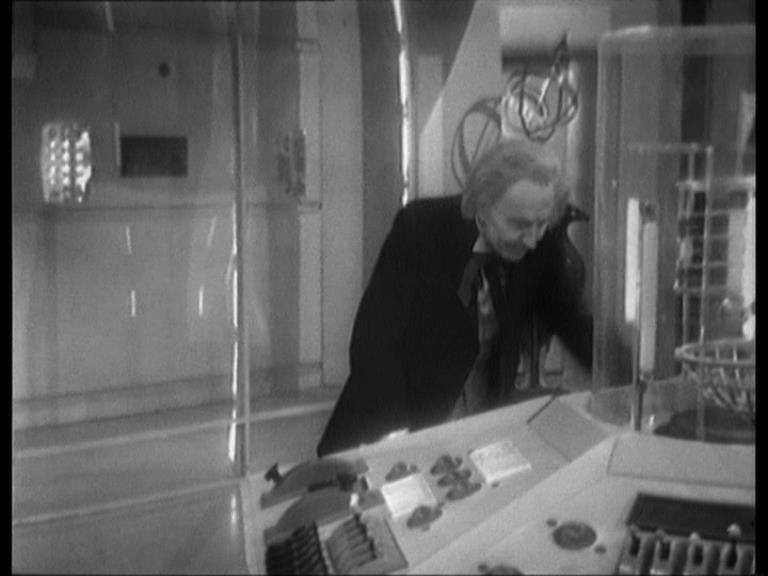
We also learn about the unique locking system on the TARDIS to prevent access. Susan explains to Ian that the lock has 21 holes in it – one correct one and 20 wrong ones. Apparently if the wrong hole is used then the entire lock melts.
Creature lore
The single most notable feature of this story arc is that it introduces the Daleks, one of the most recognisable images from the entire fifty years of the show and – given the Doctor’s tendency to regenerate his appearance every few years – arguably even more recognisable than the Doctor himself.
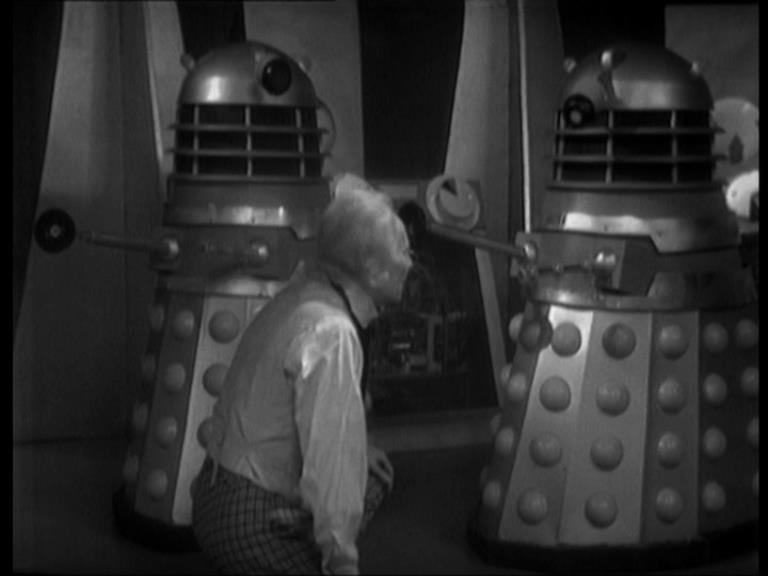
The Daleks are a kind of cybernetic organism, an organic being housed inside a robotic shell. They are utterly ruthless and malign, devoid of compassion, tolerance, empathy or indeed any other emotion than hate. We learn that many centuries ago Skaro, the planet on which the TARDIS has landed, was home to two tribes – the Thals and the Dals. The Thals were a warrior tribe while the Dals were teachers and philosophers. A conflict arose between the tribes which led to a war that ended only after the detonation of neutron bombs, which irradiated the entire planet. The Dals were driven underground while the few remaining Thals eked out a miserable existence attempting to farm the barren soil.
The exposure to radioactive fallout led to both tribes mutating over the many centuries following the war. The Thals mutated to a point where they became the exact opposite of their former selves: a tribe of pacifists barely sustained by agriculture. The Dals mutated into the Daleks, a twisted version of the scholars they had once been: still obsessed by machinery and engineering but only insofar as it can further their sole obsession of exterminating any non-Dalek life form.
The Daleks live inside buildings made entirely of metal which the Doctor realises is because they draw on static electricity to power the robotic shells which house their remaining organic component. In a startling moment, the Doctor and Ian remove the top from an immobilised Dalek and immediately shoo Susan and Barbara away so they don’t see what’s inside. Unfortunately neither do we – the only glimpse we get of the being is a twisted claw which creeps out from underneath the cloak that Ian uses to conceal it.

However, when they are functioning correctly the Daleks are an awesome foe. Their shells are bristling with weapons: various arms can shoot out a paralysis beam, a flame that can cut through metal, and an instant death ray. Famously, the Daleks can’t go upstairs (at least in these early episodes) but instead use elevators which run for many levels beneath the surface. They speak English but in a halting, robotised, metallic voice that expresses no emotion other than the hate that drives them. Equally famously, the Daleks’ battle cry of “Exterminate!” has long since passed into popular speech in the UK and references to it, and the Daleks themselves, in British popular culture are innumerable.
It’s impossible to overstate the importance of the Daleks both within the Doctor Who universe and as a factor in the show’s success. For whatever reason, the Daleks captured the public imagination massively almost as soon as they appeared which for a show that was only in its sixth episode was a terrific boost. The show never looked back from that moment and always found a way to bring the Daleks back into the stories, so much so that they became the Doctor’s arch-enemy. I think part of the popularity of the Daleks can be attributed to their design which really is innovative. When you think about it, so many monsters and aliens are essentially variants on a humanoid shape: eyes, arms, legs and so on. But the Dalek has none of that, being a truly unique design. They don’t even have a face, let alone any facial features, and this somehow makes them even more malevolent.
Review
As a piece of TV, this story arc starts well and ends well but at seven episodes is probably one or two episodes too long, in particular an interminable sequence devoted to jumping across a yawning chasm in an underground passageway. The petrified forest is well realised and the deserted city, while clearly a model, is also impressive. The Daleks’ underground city is rather dull – although probably in keeping with how such a race would design it – and there are a few too many sequences of characters running up and down what is plainly the same corridor shot from a different angle. It’s not the only moment where the seams show: lines are flubbed, sets wobble, and at one point the shadow of a boom mic is clearly visible on one character’s face. However, that slightly shambolic quality has, over the years, become something which has helped the show endear itself to audiences worldwide.
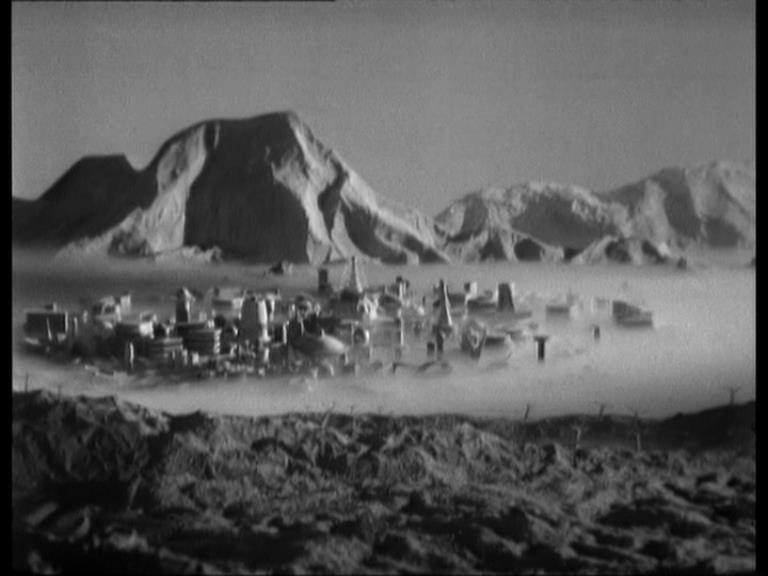
It’s worth pointing out that William Hartnell was well into his fifties when he took on the role of Doctor Who so it’s not surprising that the much younger William Russell, as Ian, does a lot of the action stuff. In fact, there are long sections where the Doctor doesn’t feature at all; it doesn’t seem to matter though, probably because the Daleks are so riveting.
There are one or two familiar names in the supporting cast. Virginia Wetherell who plays Dyoni, one of the Thal women, appeared in several British horror films including the fondly-remembered DR JEKYLL & SISTER HYDE [1971] and the Jack Palance version of DRACULA [1973]. Marcus Hammond, who plays the cowardly but ultimately heroic Thal Antodus, has a very memorable face which I couldn’t quite place until I looked him up online and found out that he’s in the excellent Hammer horror PLAGUE OF THE ZOMBIES [1966].
THE DALEKS was the first story arc to be written by one of the names most closely identified with the creativity behind the show – Terry Nation. It was Nation who created the Daleks as a concept although their specific look was the work of designer Raymond Cusick.
NEXT MONTH: THE EDGE OF DESTRUCTION
 Horror News | HNN Official Site | Horror Movies,Trailers, Reviews
Horror News | HNN Official Site | Horror Movies,Trailers, Reviews


